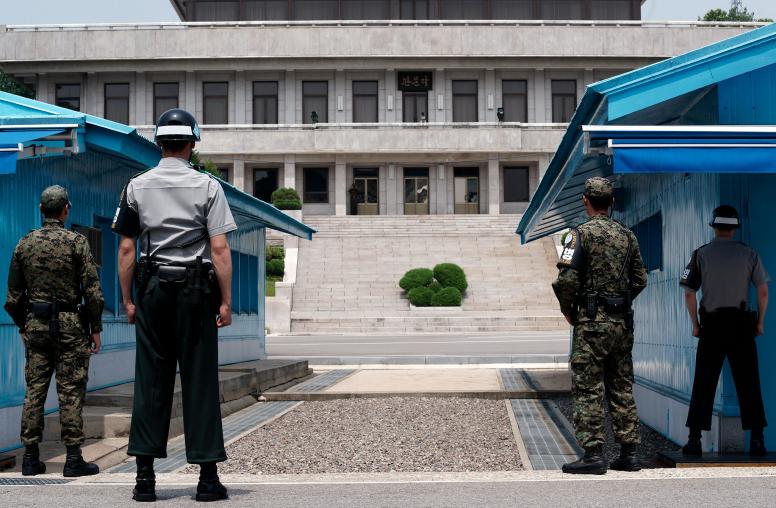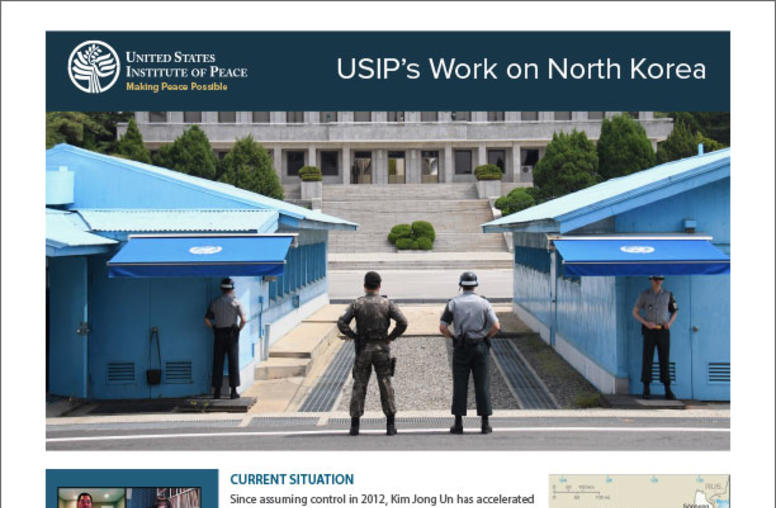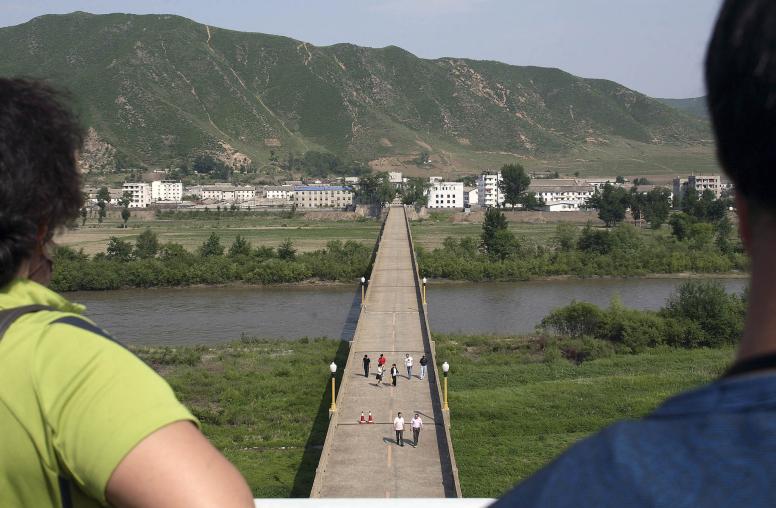Nuclear Diplomacy with North Korea: What’s Ahead for the Biden Administration?
Domestic challenges for Washington and Pyongyang will likely limit bilateral engagement.
Editor’s note: This is the second in a three-part series analyzing the nuclear diplomacy challenges the incoming Biden administration will face. In Part 1, USIP’s Robin Wright looks at the short window of time the Biden team will have to get nuclear negotiations on track with Iran. In Part 3, USIP's Donald Jensen examines the prospects for arms control with Russia amid competition on other issues.
The Biden administration faces a situation with North Korea similar to what President Obama faced in 2009, with U.S.-DPRK engagement on its last legs. Obama appeared interested in reviving the Six Party Talks, but slow outreach to North Korea allowed Pyongyang to seize the narrative by conducting a satellite launch in April and a nuclear test in May, which doomed engagement for an extended period. Biden will face a similar decision about how to engage North Korea, including whether to move forward with joint U.S.-South Korea military exercises in March, and whether to reaffirm the outcomes of the 2018 joint U.S.-DPRK Singapore Statement, which Pyongyang has yet to renounce but is on life support.

The key difference between 2009 and today is that North Korea now possesses more capable nuclear weapons—and more of them—and has also developed long-range missiles capable of reaching the continental United States.
Notwithstanding President Trump’s unusual elevation of the issue, the North Korea dilemma has typically been a lower priority for the United States because the likelihood of diplomatic success is low and the costs of engaging are high. Given Pyongyang’s stubbornness in negotiations and the lack of a strong U.S. domestic constituency that supports greater engagement, it is easier for an administration to stand resolute with bipartisan consensus against an authoritarian government, using economic sanctions and military shows of force, than to use political capital and limited resources to tackle a Sisyphean task.
Also, other competing challenges—including the COVID pandemic and its attendant economic consequences, climate change, racial and social unrest, the U.S.-China relationship, and nuclear diplomacy with Iran, among others—could mean that the North Korea issue falls by the wayside. If the past is a guide, Pyongyang will not put up with being ignored by Washington. Rather, North Korea is likely to grab attention through various methods, including traditional provocations such as missile and nuclear tests, military means—skirmishes along land or maritime borders with South Korea—or through cyberattacks and testing of new weapons.
Even if Biden is open to meetings without preconditions, there is no guarantee that Pyongyang will engage since it has rebuffed this exact approach from the Trump administration since October 2019.
Cautious Diplomacy, Sustained Pressure
The Biden administration will likely revert back to a more conventional approach that relies on cautious diplomacy to explore North Korea’s intentions as well as sustained pressure to sharpen its choices. During the campaign, Biden promised to engage in “principled diplomacy,” which was intended as a clear break from Trump’s use of high-profile summits. This phrase also suggests that engagement will be contingent on certain principles or conditions being met, which hearkens back to the “authentic and credible negotiations” standard that the Obama administration set and the Kim regime refused to meet.
Biden’s promises of potential sanctions relief and an “alternative vision for a nonnuclear future” would be meaningless if there is no forum to raise them. Even if Biden is open to meetings without preconditions, there is no guarantee that Pyongyang will engage since it has rebuffed this exact approach from the Trump administration since October 2019. In fact, some reports suggest that Pyongyang has demanded concessions like sanctions relief just to come back to the table. Biden and his team have emphasized the need to use pressure, on both North Korea and China, to get Pyongyang back to the negotiating table, but experience suggests that both North Korea and China often respond to pressure with pressure. Another complicating factor is how to exert pressure in the context of South Korean President Moon’s desire for greater and accelerated engagement with North Korea and the Biden campaign’s promise to work better with its allies.
Of course, the Kim regime may be willing to meet to probe the intentions of a new U.S. administration. But the current crisis Pyongyang faces at home—including the reeling effects of multiple natural disasters, debilitating economic sanctions, political disappointments, and a COVID situation that has caused the government to shut down its borders and refuse international humanitarian assistance—makes it equally likely that it will remain in its shell until the environment becomes more favorable.
All of these impediments suggest that, unless the Biden administration goes bold and thinks out of the box (for example, by mounting an early peace offensive), it may be left with a situation like 2009 in which North Korea conducts a provocative act to gain leverage, the United States reacts with economic and military countermeasures to show resolve, and the prospects for peace, progress, and denuclearization on the Korean Peninsula become ever more distant.



